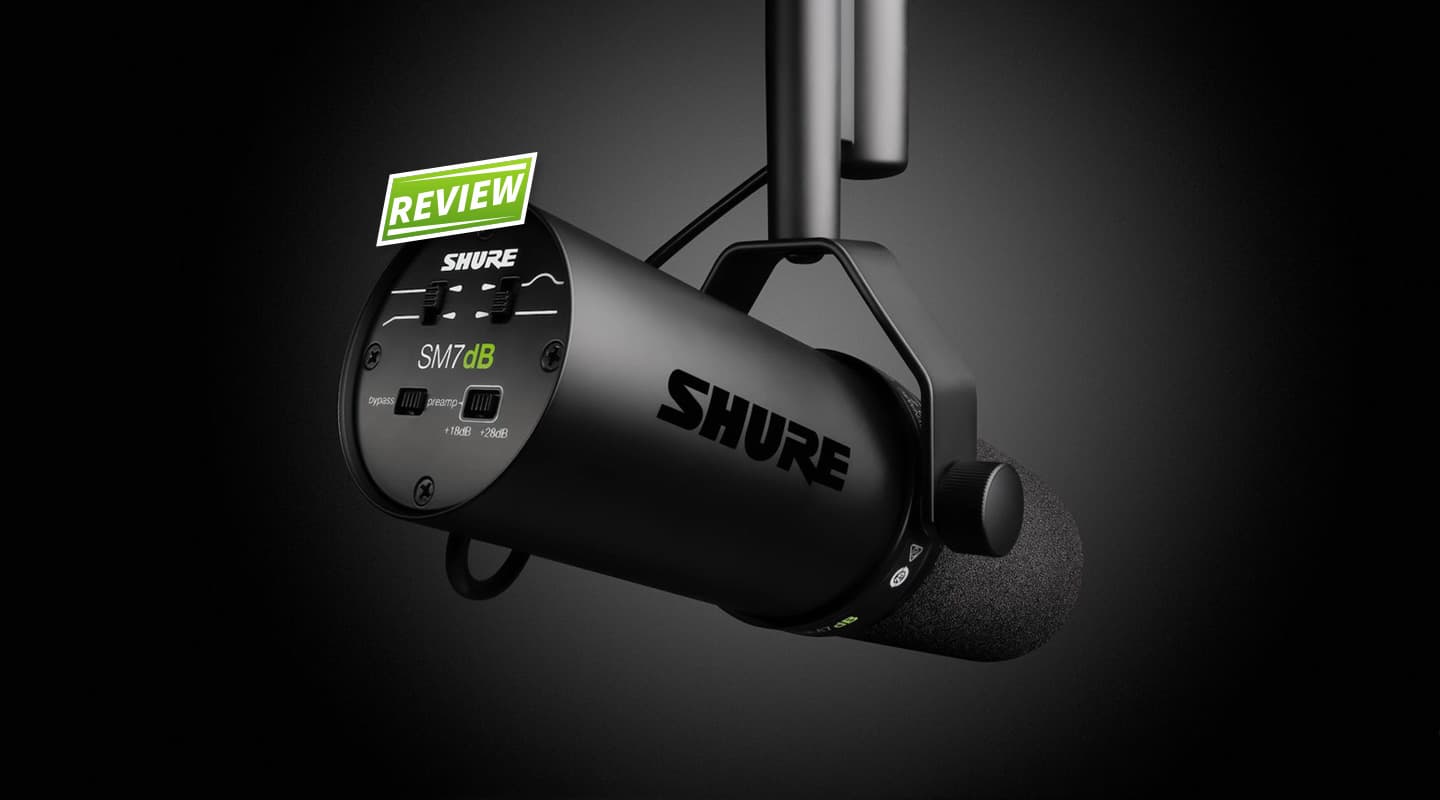
Review: Shure SM7dB
An icon is improved (by 28dB).
The iconic Shure SM7B dynamic microphone needs no introduction. Neither does its infamous ‘inadequacy’ – a notoriously low output. For many, the SM7B’s demand for a huge amount of clean gain was a dealbreaker. Not many prosumer audio interfaces and podcast recorders can supply enough gain to record softer material without hugely raising the noise floor. For everyone else using the SM7B in spoken word or other low-SPL applications, it generally needs to be paired with a high quality preamplifier, or an in-line gain booster like a Cloudlifter.
Besides its low-output snafu, the SM7B is a legendary microphone. A tight polar pattern with excellent rear rejection makes it perfect in the studio for vocals, guitar cabs, or even snare drums. In the podcast studio or voiceover booth, the SM7B excels in reproducing a natural and warm vocal tone on pretty much any voice. The lengthy grille is among the most effective in its class at stopping plosives without the need for a separate pop filter. The manoeuvrable Y-mount allows for flexible positioning and the adjacent XLR connector feeds a cable tidily along the mic stand. Ask recording engineers, radio presenters, podcasters, musicians – not many will have a bad word to say about the SM7B.
POWER UP
Big news. Shure has listened to its users, addressed the low output niggle with the SM7B, and built a solution right into the mic. Meet the SM7dB. It’s aptly named, because this revamped version gives you a bunch of free gain.
Like a Cloudlifter, the SM7dB’s built-in preamplifier needs phantom power to work. A switch on the rear lets you boost the output by 18dB or 28dB –more than enough to pump a juicy signal into even the most pedestrian of preamps in a mixer or audio interface.
I like having the two gain options. Some people sing, speak or rap louder than others. For the quiet ones, +28dB is the go. Pair this with clean gain from a nice preamp and you can capture even whisper-quiet sources with ease and clarity. In fact, it opens up a whole new horizon of recording options. Normally I wouldn’t think to record an acoustic guitar with an SM7B. But with the SM7dB? Even the most delicate fingerpicked parts can be captured noise-free.
For the most part I found myself sitting on the +18dB setting as it’s just enough to boost the signal to the input level of a typical condenser mic, but not so much that you’re nearly clipping after adding a touch of preamp gain. For louder sources in the studio you can bypass the preamp altogether and run passive.
NEED TO KNOW
Shure SM7dB
Dynamic Microphone with Built-in Preamp
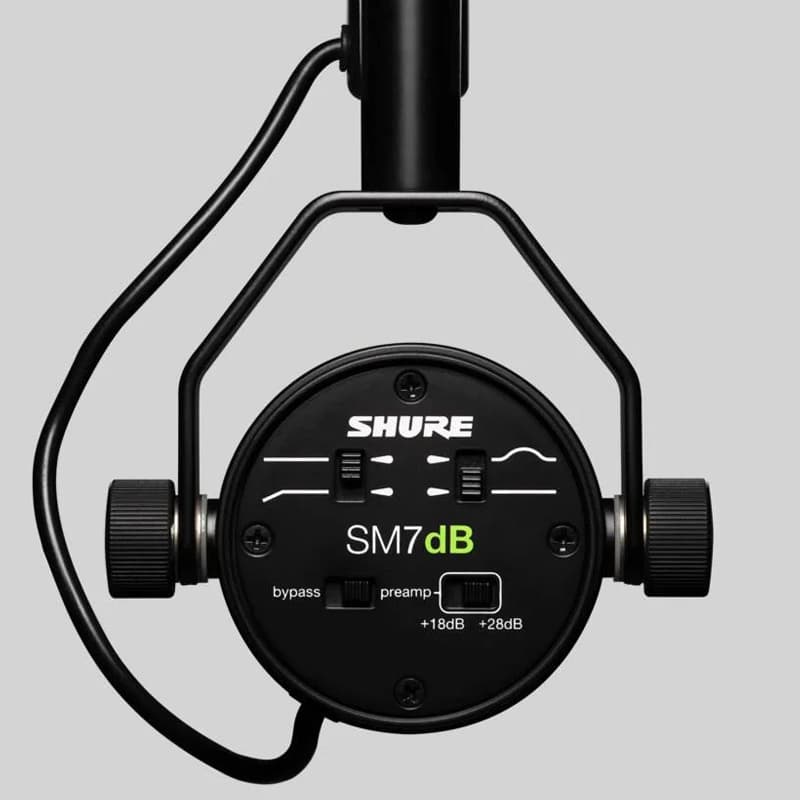
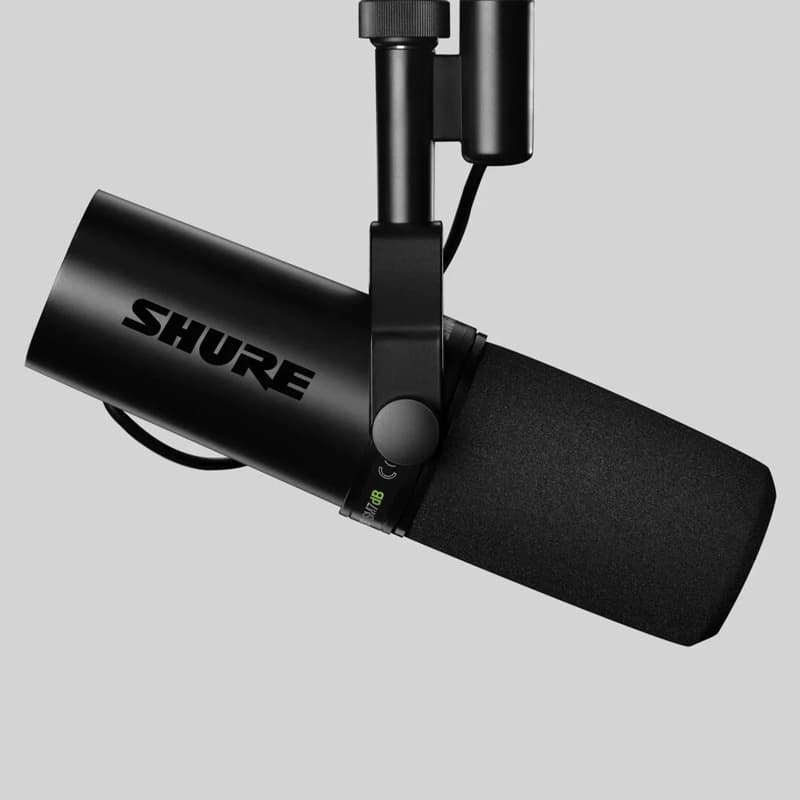
Shure has listened to its users, addressed the low output niggle with the SM7B, and built a solution right into the mic
SAME BUT BETTER
The SM7dB sports a HPF and mid boost EQ like the original, but with what I think is a more tactile and easy-to-use design than the original’s recessed sliding switch. These operate regardless of whether the mic’s preamp is activated or not. Shure has made minor aesthetic modifications to the SM7dB. While the body shares the same matte black finish, a subtle black Shure logo lines both sides of the case and there’s a small pop of bright green on the ‘dB’ printed around the collar.
A key question is whether the re-engineering of the SM7dB has created sonic differences from the original SM7B in any way. Shure maintains this is not the case. You’re getting all the charm of the original with the added value of a gain boost.
The other question is whether the built-in preamp impacts the mic’s tone at all. There may be a very minor high-mid lift when the preamp is activated, but it’s so subtle I couldn’t confidently say it’s a definite colouration from the preamp.
Who will buy the SM7dB? Well, it’s fair to say most people already in the market for an SM7B will own a preamp capable of gaining it up without extra ‘help’ – which is why, for the extra A$150, I doubt the SM7dB will outsell the SM7B.
However, for everyone else, the SM7B’s low output is the primary reason why they might still be on the fence about buying one of their own. For those who fall into this category, the SM7dB is a definite no-brainer – and a bullseye of a product from Shure.

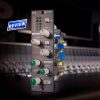
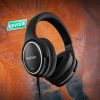




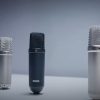


















RESPONSES